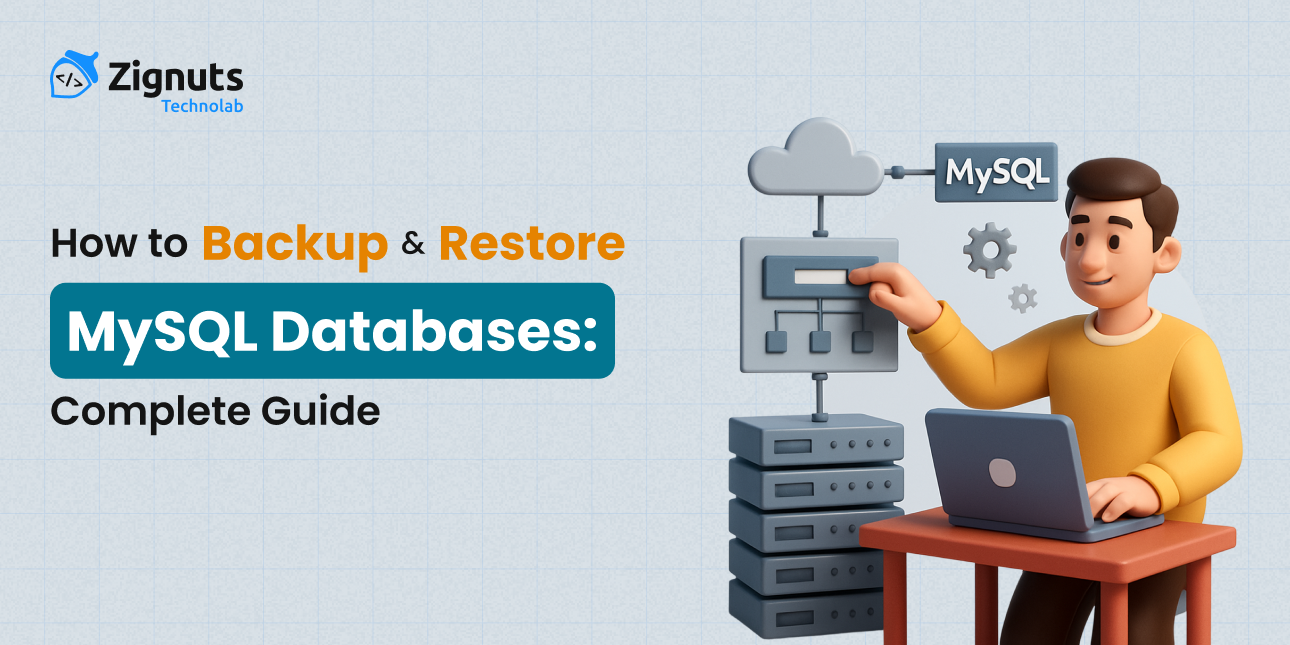Whether you're running a small project or managing enterprise-scale applications, data is the lifeblood of your systems. Losing it due to accidental deletion, hardware failure, or cyberattacks can be catastrophic. That’s why regular database backups and knowing how to restore them are essential for disaster recovery, data integrity, and business continuity.
In this guide, we’ll walk you through everything you need to know about backing up and restoring MySQL databases, with best practices and real-world commands for different backup strategies.
Why Backing Up MySQL Is Crucial
- Human Errors: Accidental DROP, DELETE, or schema changes.
- System Failures: Disk crashes, memory leaks, or power outages.
- Cyber Threats: Ransomware or malicious attacks.
- Data Corruption: Due to bugs or external factors.
- Compliance: Meet legal and business audit requirements.
Types of MySQL Backups
There are two primary types:
- Logical Backups – Export SQL statements (e.g., mysqldump).
- Physical Backups – Copy actual database files from disk (e.g., Percona XtraBackup, file system snapshots).
Tools for Backing Up MySQL
- mysqldump – Native MySQL backup tool.
- mysqlpump – Faster multi-threaded alternative to mysqldump.
- Percona XtraBackup – Open-source tool for hot physical backups.
- [LVM Snapshots] – For file-level backups with minimal downtime.
- [Cloud-native backups] – AWS RDS snapshots, Google Cloud SQL backups, etc.
Creating a MySQL Backup Using mysqldump
mysqldump is the most commonly used tool for logical backups.
(Notes: command works on all platforms (Mac, Windows, Linux))
Backup a Single Database
Backup Multiple Databases
Backup All Databases
Backup with Compression
Restoring a MySQL Database Using mysqldump
Restore from SQL File
Make sure the database my_database already exists. If not, create it:
Restore All Databases
Backing Up Using mysqlpump
mysqlpump is a parallelized version of mysqldump introduced in MySQL 5.7+.
Advantages:
- Faster via multi-threading
- Supports parallel database and table exports
Backing Up with Physical Files (Percona XtraBackup)
Great for large or high-performance production environments.
Install Percona XtraBackup
On Ubuntu/Debian:
Full Backup Command
Prepare and Restore
Make sure MySQL is stopped before copying back.
Automating Backups with Cron Jobs
Schedule daily backups using cron:
Add this to run daily at 2 AM:
Use a credentials file instead of exposing passwords directly in scripts.
Best Practices for MySQL Backups
- Automate your backups.
- Encrypt backup files for sensitive data.
- Test your restore process regularly.
- Store backups offsite (S3, GCP, Azure).
- Use versioning and naming conventions.
- Monitor backup success/failure.
- Limit MySQL privileges for backup users.
Example: Testing Your Backup and Restore
Conclusion
Taking regular, automated, and well-tested backups of your MySQL databases is not optional; it's mandatory. Whether you're a developer, DevOps engineer, or system admin, learning how to back up and restore databases gives you confidence, improves resilience, and keeps your systems audit- and disaster-ready.
Remember: "You're only as good as your last tested restore."
Need help with MySQL backups or database management? We're here to assist. Contact us today and let our experts support your next steps.




.svg)

.svg)



.svg)

.svg)


.png)





.png)
.png)
.png)
.png)
.png)
.png)
.png)
.png)
.png)



